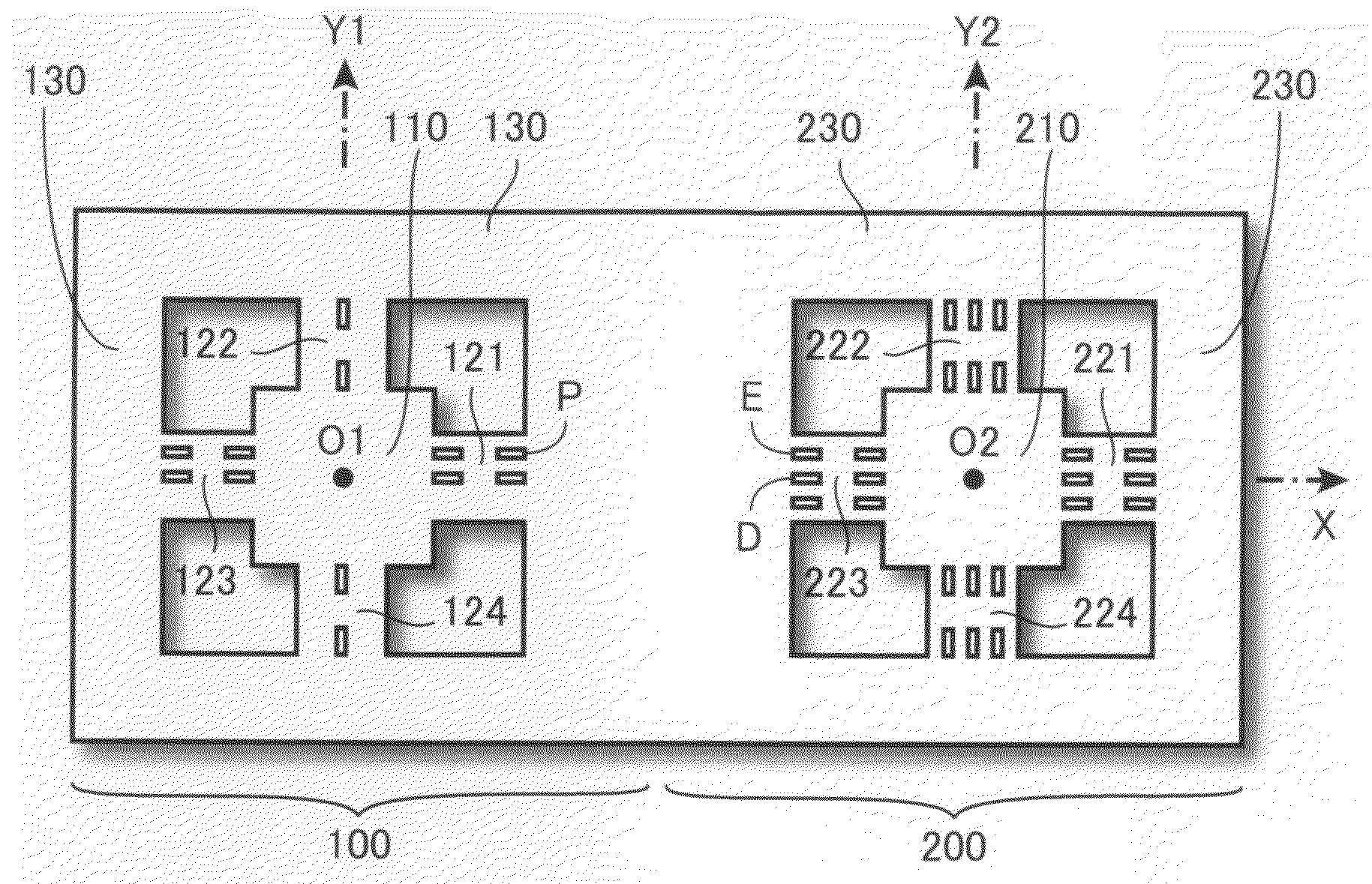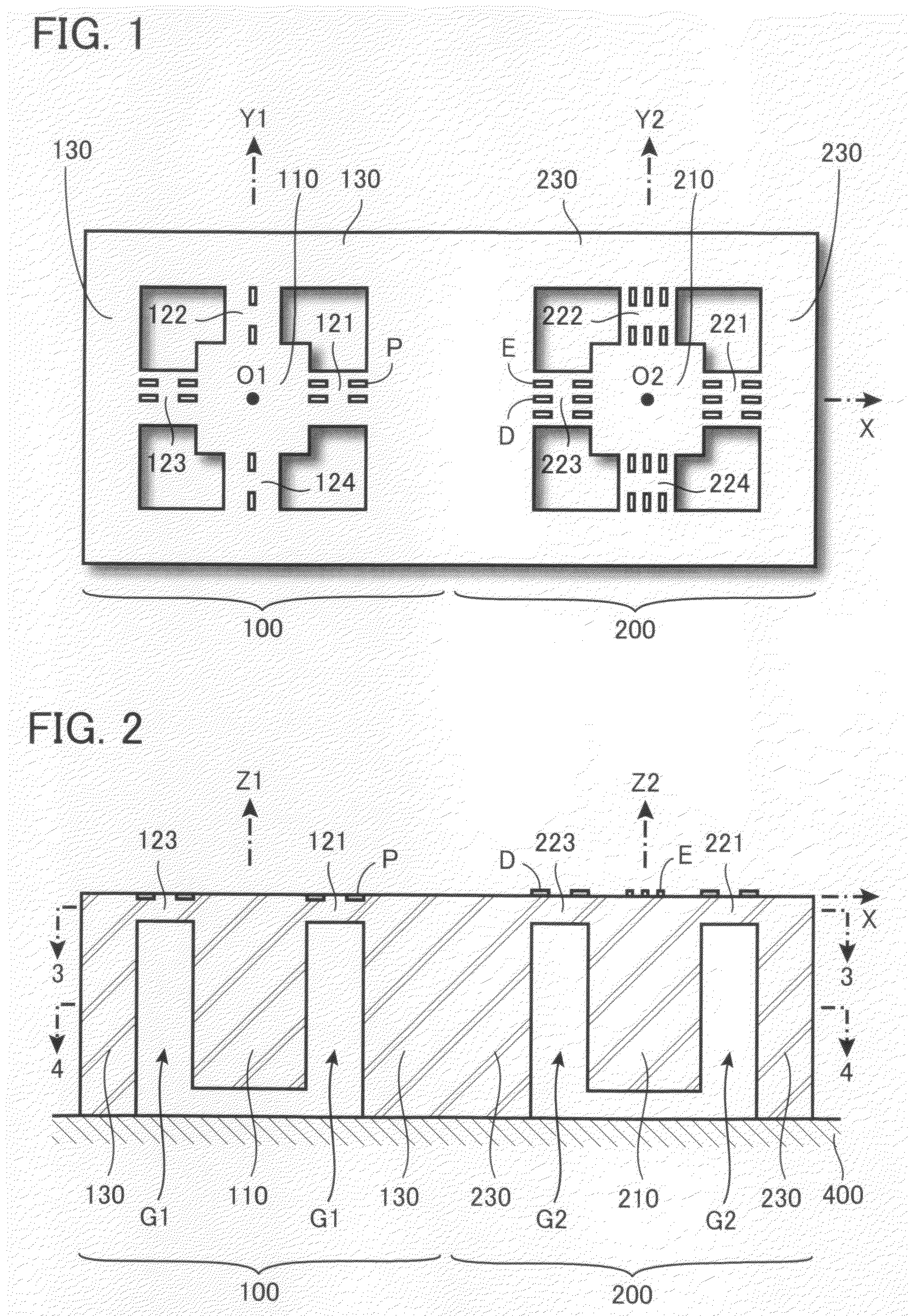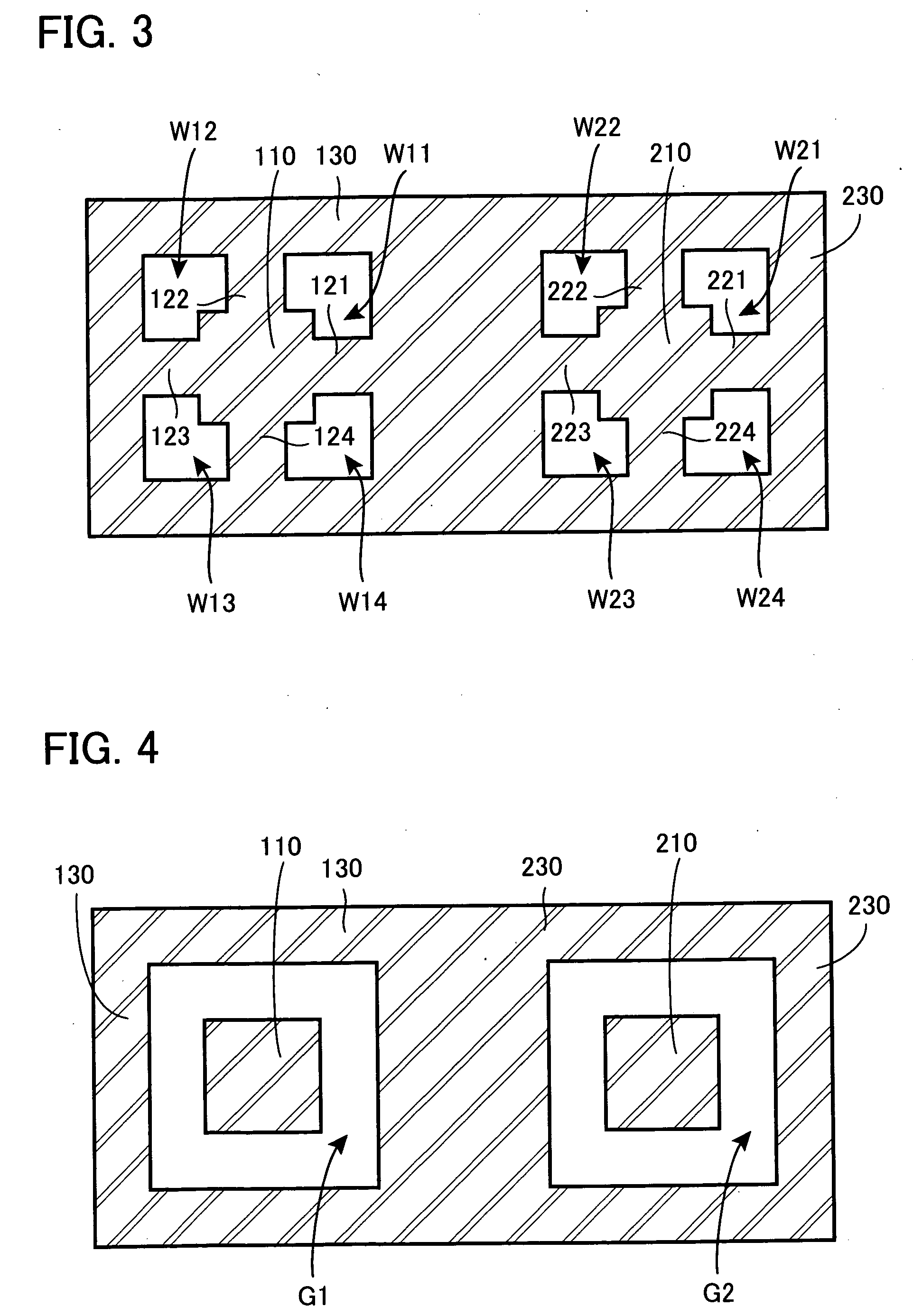Sensor for detecting acceleration and angular velocity
- Summary
- Abstract
- Description
- Claims
- Application Information
AI Technical Summary
Benefits of technology
Problems solved by technology
Method used
Image
Examples
first embodiment
Basic Structure of the Sensor
[0164]FIG. 1 is a top view of an exemplary sensor according to a first embodiment of the present invention. As shown in FIG. 1, the left half of the sensor constitutes an acceleration detecting section 100, while the right half constitutes an angular velocity detecting section 200. The major structures of the acceleration detecting section 100 are a square-columnar weight body 110 for acceleration detection, four plate-like bridge portions 121 to 124, and a pedestal 130 for acceleration detection. The pedestal 130 has a square contour arranged in such a manner as to surround the weight body 110, and the four plate-like bridge portions 121 to 124 serve as flexible connections for connecting the weight body 110 and the pedestal 130. Meanwhile, the major structures of the angular velocity detecting section 200 are a square-columnar weight body 210 for angular velocity detection, four plate-like bridge portions 221 to 224, and a pedestal 230 for angular velo...
second embodiment
Sensor
[0241]Next will be described a sensor according to a second embodiment of the present invention. The sensor according to the second embodiment can be figured out as a sensor in which the acceleration detecting section 100 and the angular velocity detecting section 200 in the sensor according to the first embodiment shown in FIG. 1 and FIG. 2 are integrated on a single major structure. As will be understood from the top view of FIG. 1 and the vertical cross-sectional view of FIG. 2, the physical structures of the acceleration detecting section 100 and the angular velocity detecting section 200 are substantially the same and equivalent to the fundamental model shown in FIG. 5 and FIG. 6. The difference between the structures is that the acceleration detecting section 100 is provided with piezoresistive elements P, while the angular velocity detecting section 200 is provided with piezoelectric elements F. In the sensor according to the second embodiment to be described herein, bo...
third embodiment
Sensor
[0278]Next will be described a sensor according to a third embodiment of the present invention. The above-described sensors have a structure in which a weight body is surrounded by a pedestal and the periphery of the weight body is supported by a flexible connection, which allows the weight body to be displaced in any direction along each coordinate axis of a three-dimensional coordinate system. Consequently, acceleration in the directions along the three-dimensional coordinate axes and angular velocity around the three-dimensional coordinate axes can be detected. The sensor according to the third embodiment to be described herein is specialized in detecting one-dimensional acceleration and angular velocity with a simpler structure.
[0279]FIG. 43 is a top view of the sensor, and FIG. 44 is a vertical cross-sectional view of the sensor. As shown in the drawings, the major structures of the sensor are a weight body 610, a flexible connection 620, and a pedestal 630, having a so-c...
PUM
 Login to View More
Login to View More Abstract
Description
Claims
Application Information
 Login to View More
Login to View More - R&D
- Intellectual Property
- Life Sciences
- Materials
- Tech Scout
- Unparalleled Data Quality
- Higher Quality Content
- 60% Fewer Hallucinations
Browse by: Latest US Patents, China's latest patents, Technical Efficacy Thesaurus, Application Domain, Technology Topic, Popular Technical Reports.
© 2025 PatSnap. All rights reserved.Legal|Privacy policy|Modern Slavery Act Transparency Statement|Sitemap|About US| Contact US: help@patsnap.com



